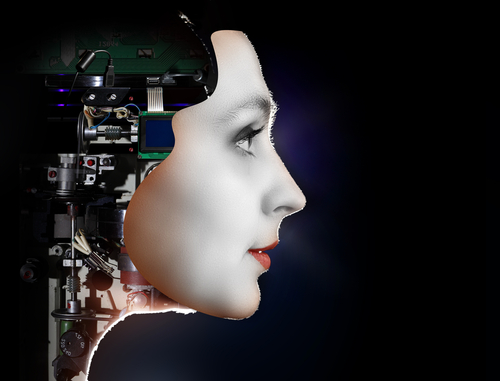The last decade has seen dramatic changes in the way people work, and this pace of change will only get faster.
Since the introduction of the computer, technology has shaped the way people use information – from the way they receive it, to how they consume it and what devices they use to access it.
Of course, technology will continue to evolve and there will be new innovations, but the next ten years are going to be different.
As life becomes more complicated, the way people use information to do their work will become simpler.
>See also: The realities of artificial intelligence: Could ‘Her’ actually happen?
Instead of being a distraction, technology is going to help people; it will be their friend in creating and consuming information, and make the way they work together more natural.
It’s hard to accurately predict where we’ll be in ten years. Bill Gates said: “We always over-estimate the change that what will occur in the next two years and underestimate the change that will occur in the next ten.” But when trying to talk accurately about technological change over a decade, it can sound more like fiction than fact.
According to Moore’s law, in ten years time computing will be about 64 times more powerful, storage capacity will be about double that, and network capacity probably about 50 times greater than today. So it’s safe to say that one way or another, things are going to be very different.
With what will be virtually unlimited computing, networking and space capacity by today’s standards, any problem of complexity will be overcome and simplified by a combination of artificial intelligence, high-capacity analytics, sophisticated processing and sheer brute-force computing.
To the user, it will become less about the science of the technology and more about new ways of working seamlessly and efficiently with it.
Tim Tuttle, CEO and founder of Expect Labs, has a clear vision for the future workplace that is completely interactive; an office that, through a combination of cameras and microphones, not only recognises employees but also understands them and reacts to their needs in a way that is almost human. He says employees will be able to rely on the room almost as much as their own colleagues. This will be truly smart technology.
Software is already becoming more intuitive and, in the future, will be able to learn what people’s intentions are and explicitly check what they intend implicitly by asking, “Are you sure about that?” or “Is this what you really meant?”
Humans are great at picking out patterns relating to one another and being able to apply creativity to any problem. But software that has all the facts, statistics and analytical capacity can test assumptions and provide alternative outcomes.
John Mancini, president of AIIM, points to the iPhone, which only launched in 2007, as a great example of how quickly technology develops.
With the degree of innovation moving at such a rapid pace, it is not so hard to believe that a working environment where content and information is routed around user needs is close.
The technology will know what jobs people are trying to do and what decisions they need to make, and will be intelligent enough to deliver the right information at the right point.
The benefit to businesses of this technological development comes from improved efficiency. The design of collaboration and information software will be informed by a greater understanding of human psychology – what they are good and not good at.
Matt Mills, CEO of Featurespace, sees this kind of technology as central to breaking down the silos that normally exist within an organisation. He believes this technology will be able to understand people’s strengths and work will be allocated accordingly.
>See also: Bringing learning to the data: AI in the enterprise
Most importantly, as this technology evolves and improves, it’s going to become seamless and unnoticeable. Tuttle suggests there will be intelligent assistance in every application, each with a different area of expertise, but they will mostly be performed in the background.
Michael Porter’s research at Harvard indicates that with the Internet, clusters of industry and specialisation are not going to disappear, but will actually be strengthened.
This means that face-to-face meetings and interactions are still very important and will still be so in ten years time. But these interactions will be enhanced with augmented reality that overlays information next to the people or things that are collaborating.
People may also find that their automated collaborators are more reliable than their human ones down the corridor.
Technology is central to making sure people can work smarter, not harder.
Sourced from John Newton, founder and CTO, Alfresco







